L-SYSTEMS IN ARBOREAL FRACTALS
FRACTAL GROWTH
This project explores the application of Lindenmayer systems (L-systems) for fractal growth simulation within the Grasshopper environment. L-systems provide a powerful framework for modeling complex branching structures observed in nature, such as trees, plants, and coral reefs. Leveraging Grasshopper’s computational design capabilities, we investigate the dynamic generation of fractal geometries through iterative symbol replacement rules using the Rabbit plugin, capturing the self-similarity and emergent complexity inherent in natural systems. The research is further developed using Anemone loops, with the aim to elucidate the underlying principles governing fractal growth phenomena and parameters governing tree/plant growth
RESEARCH
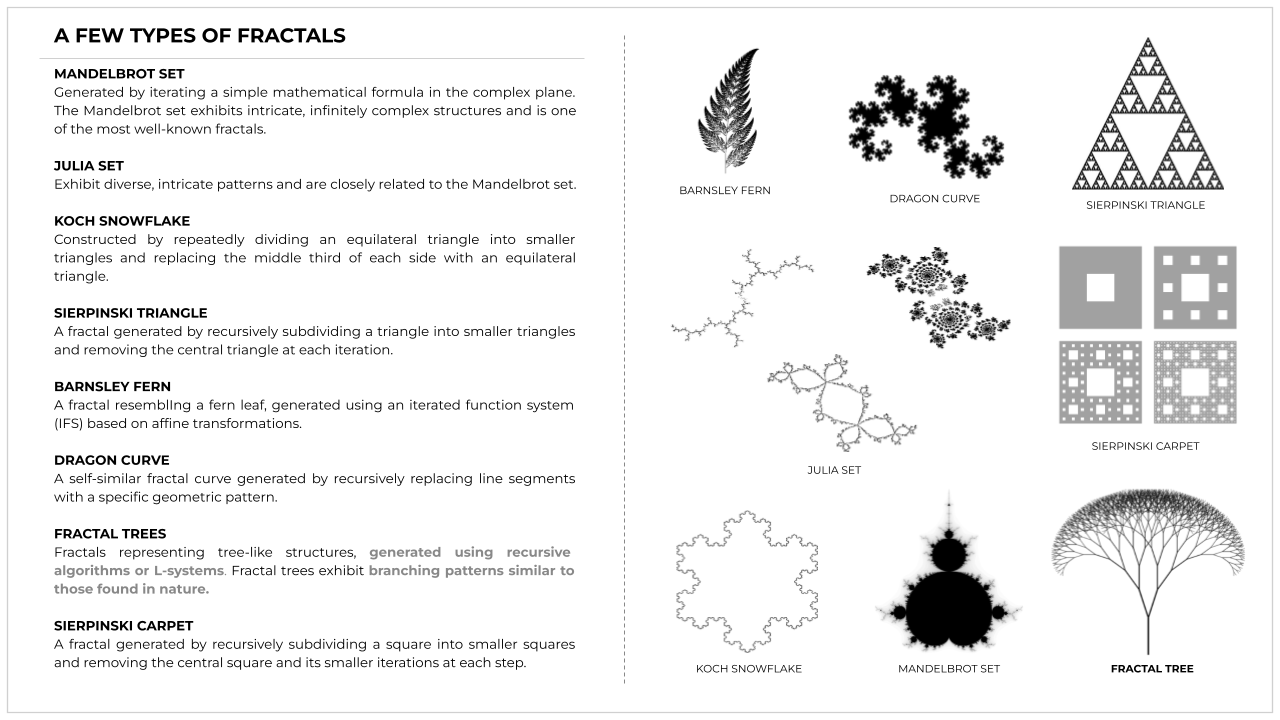
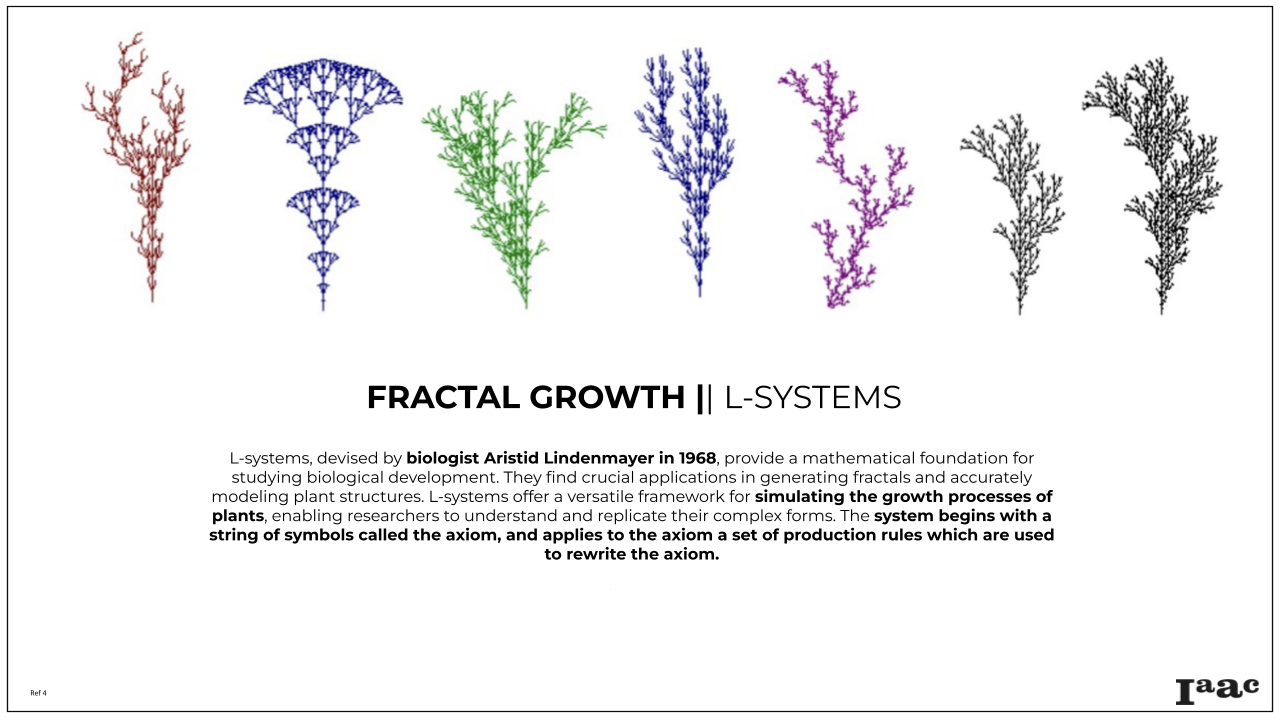
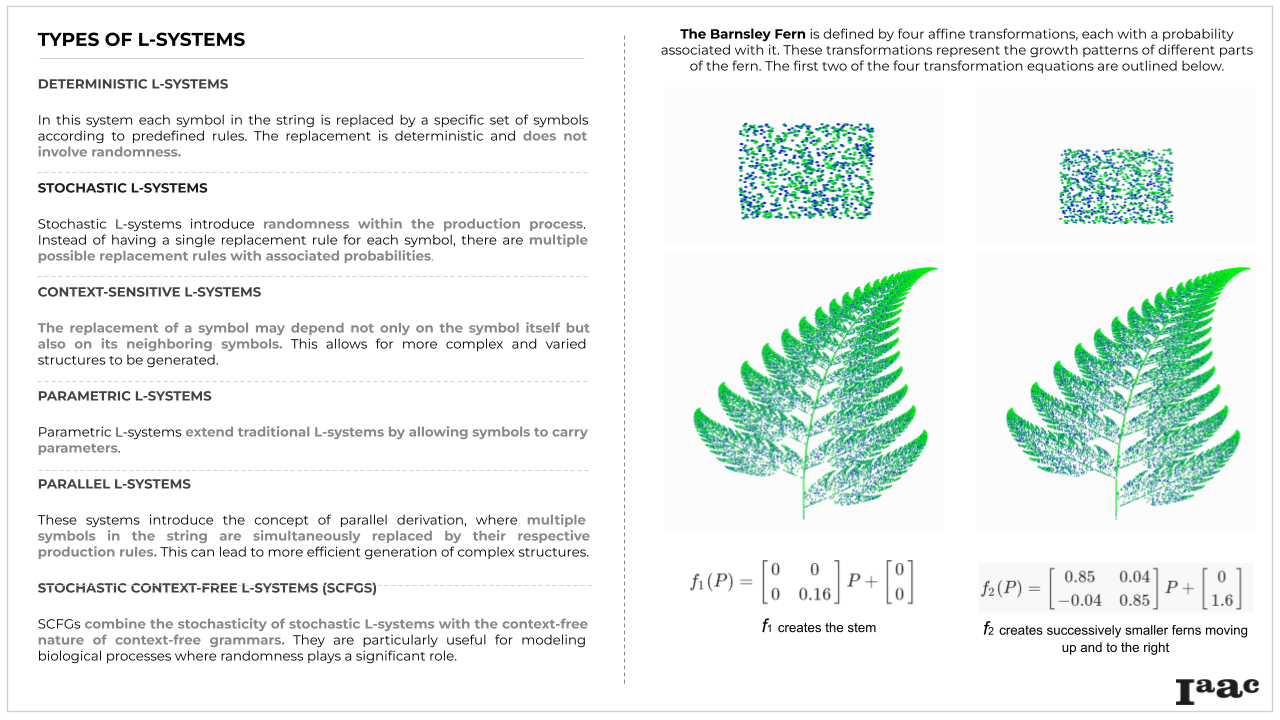
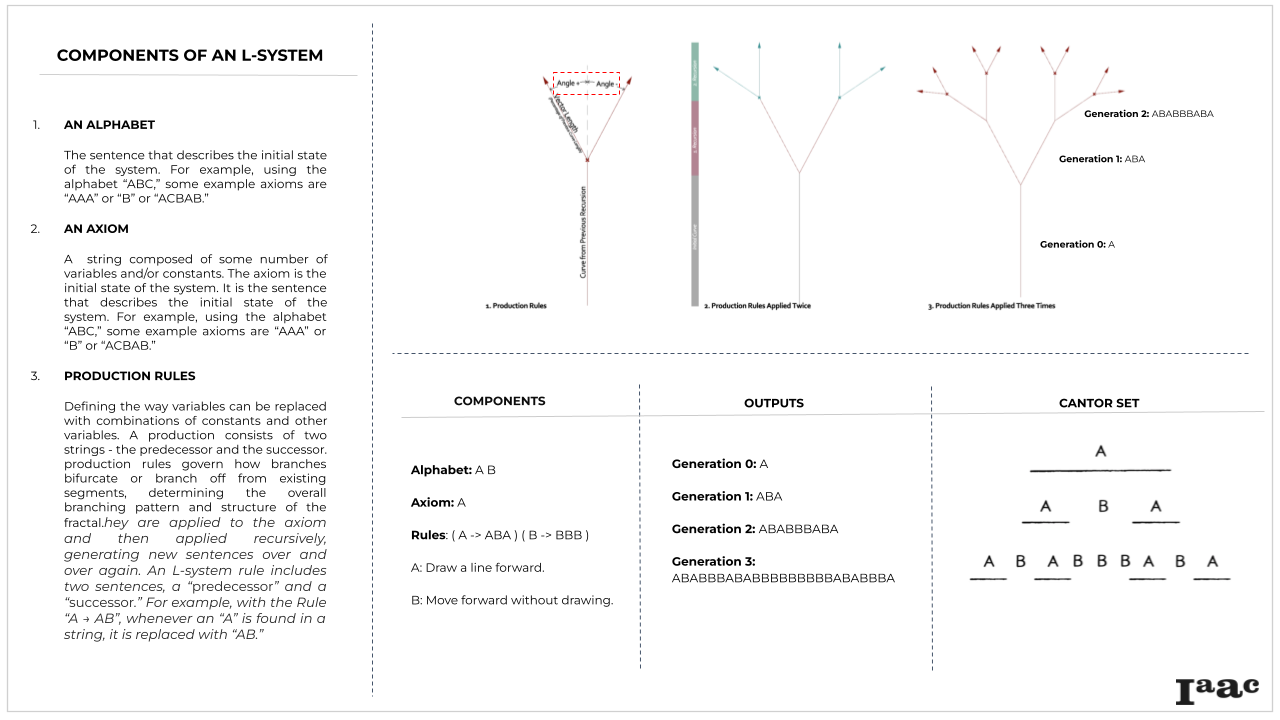
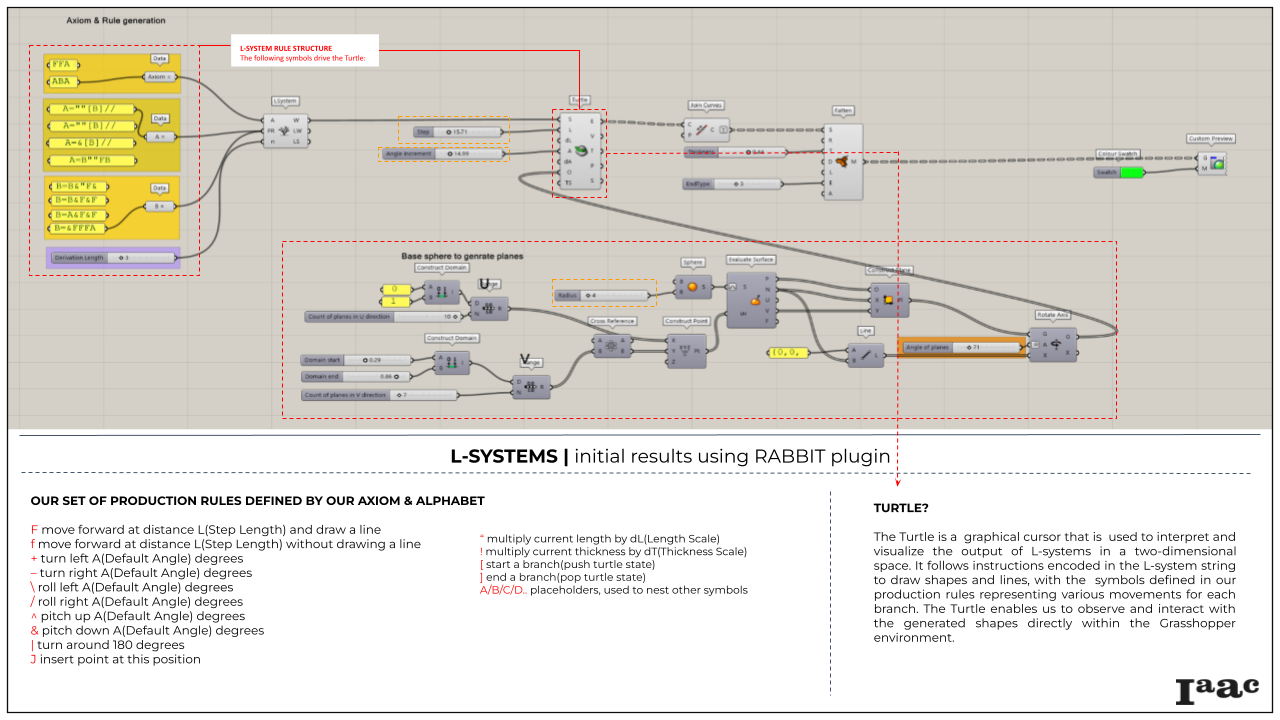
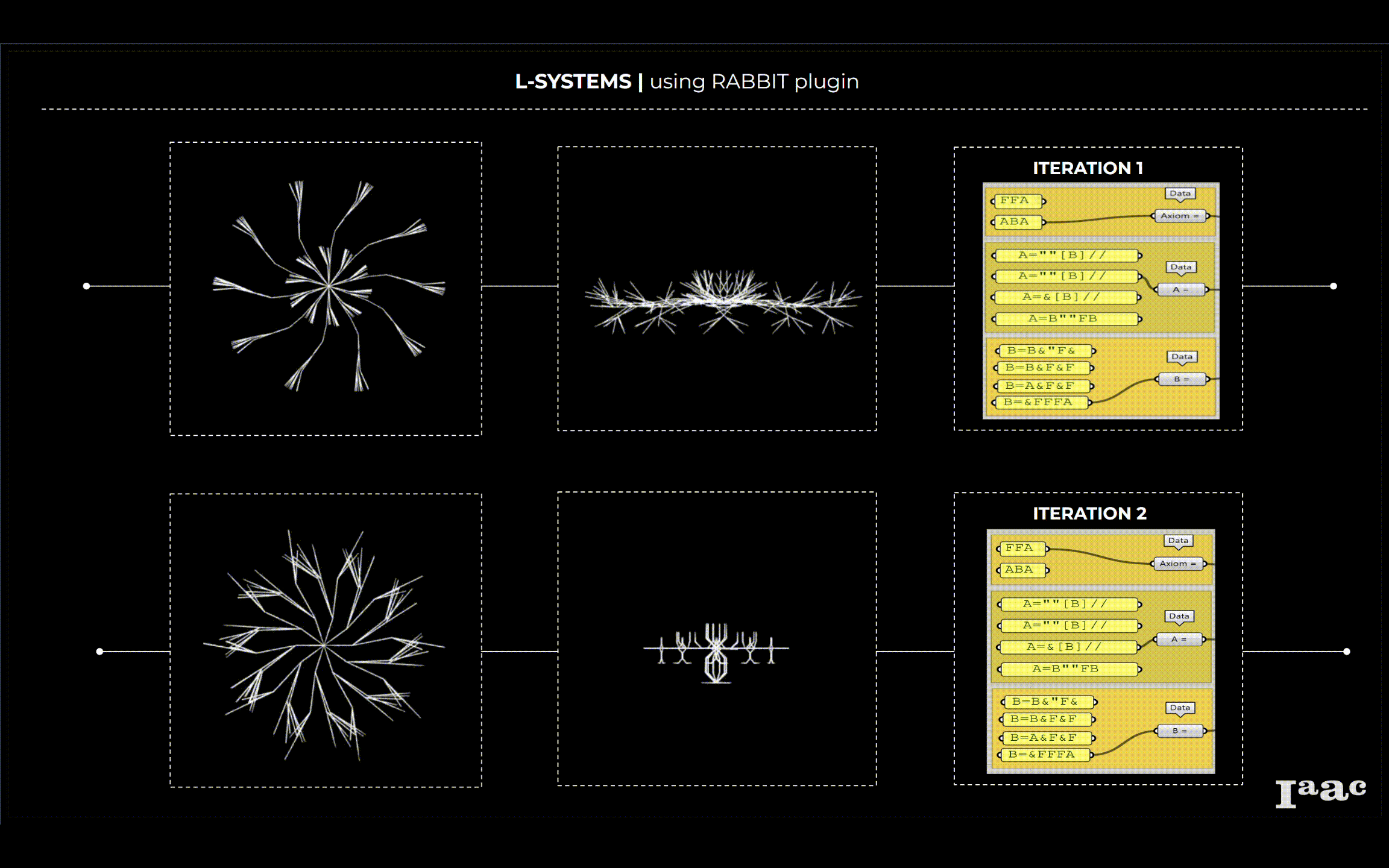
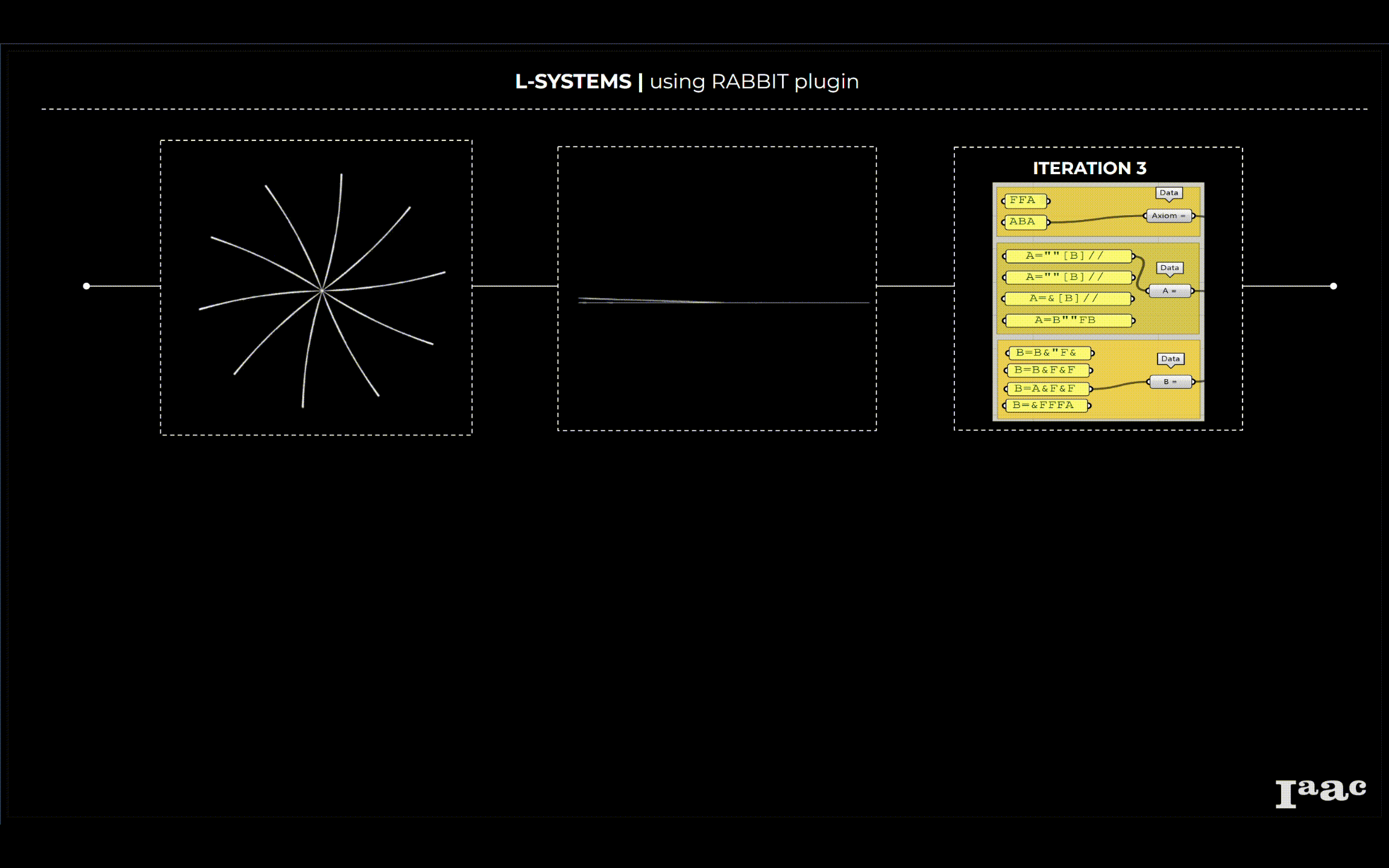
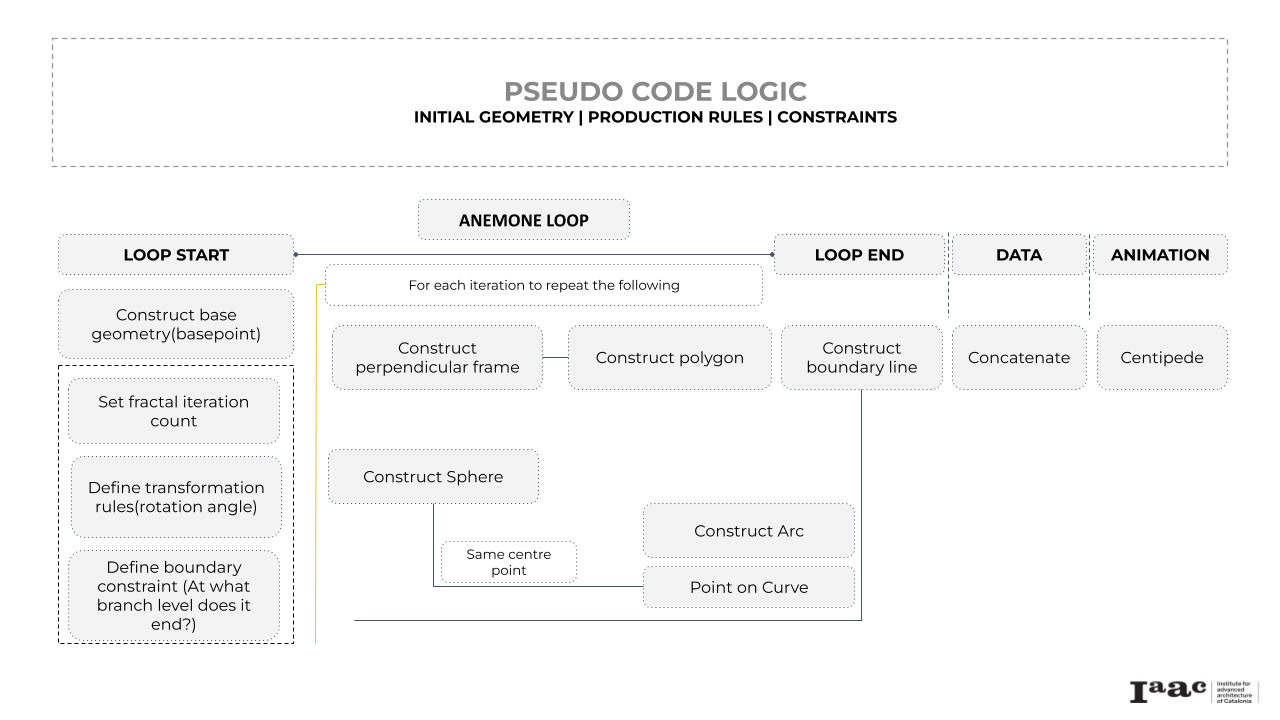
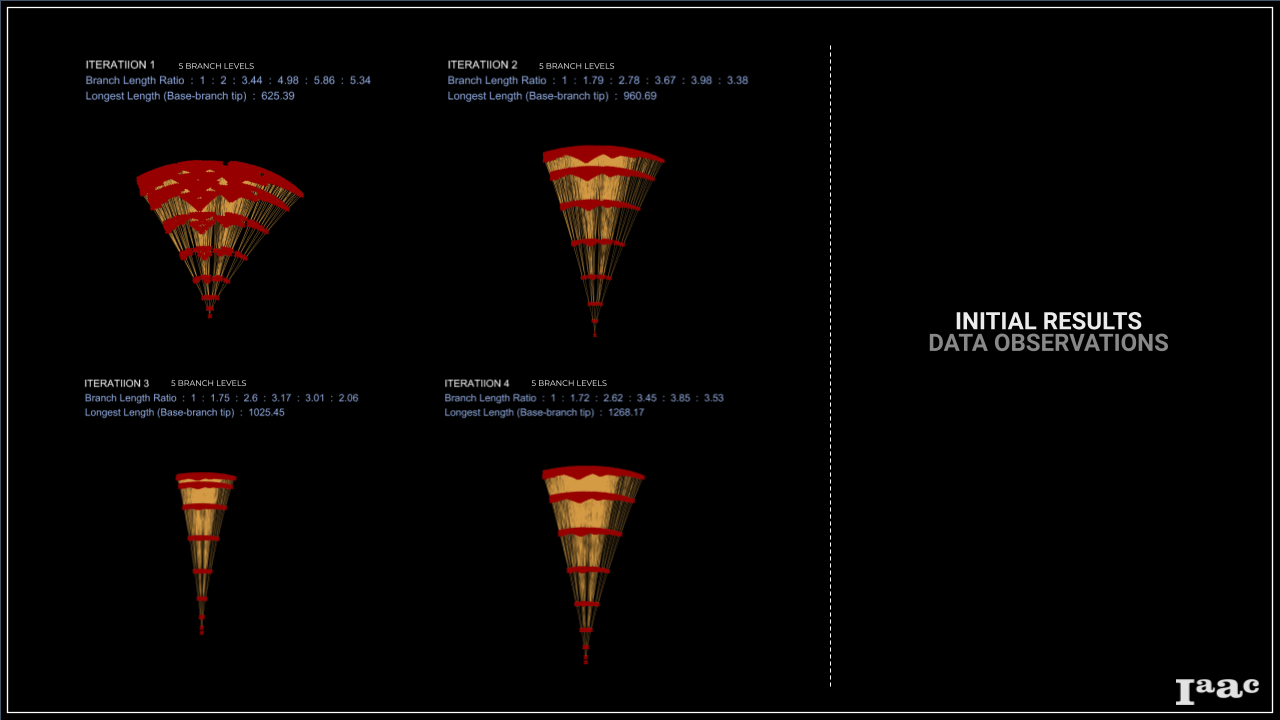
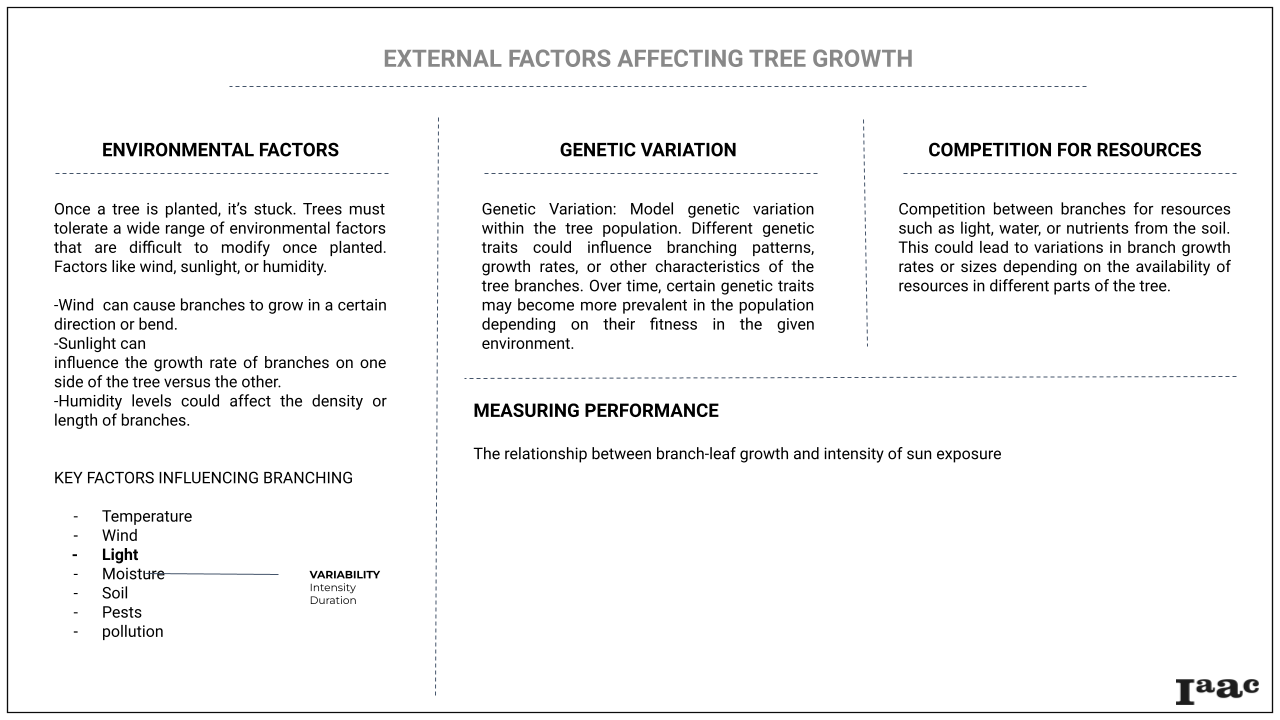
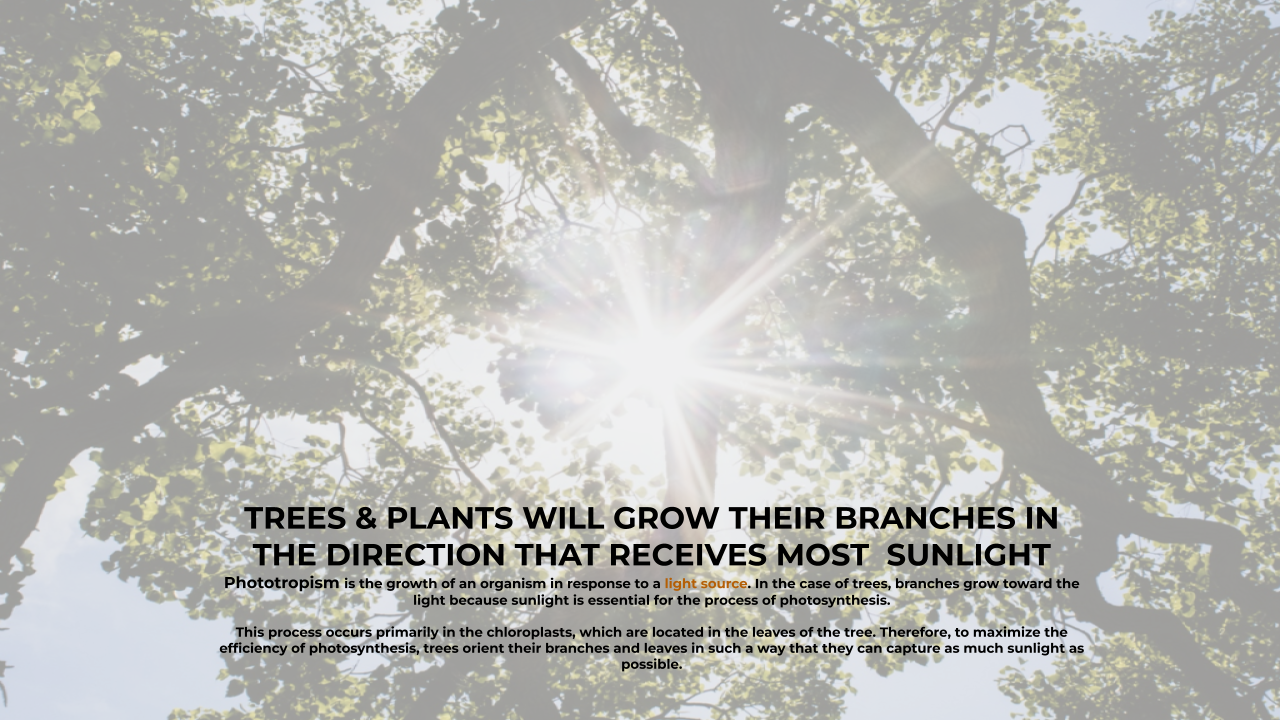
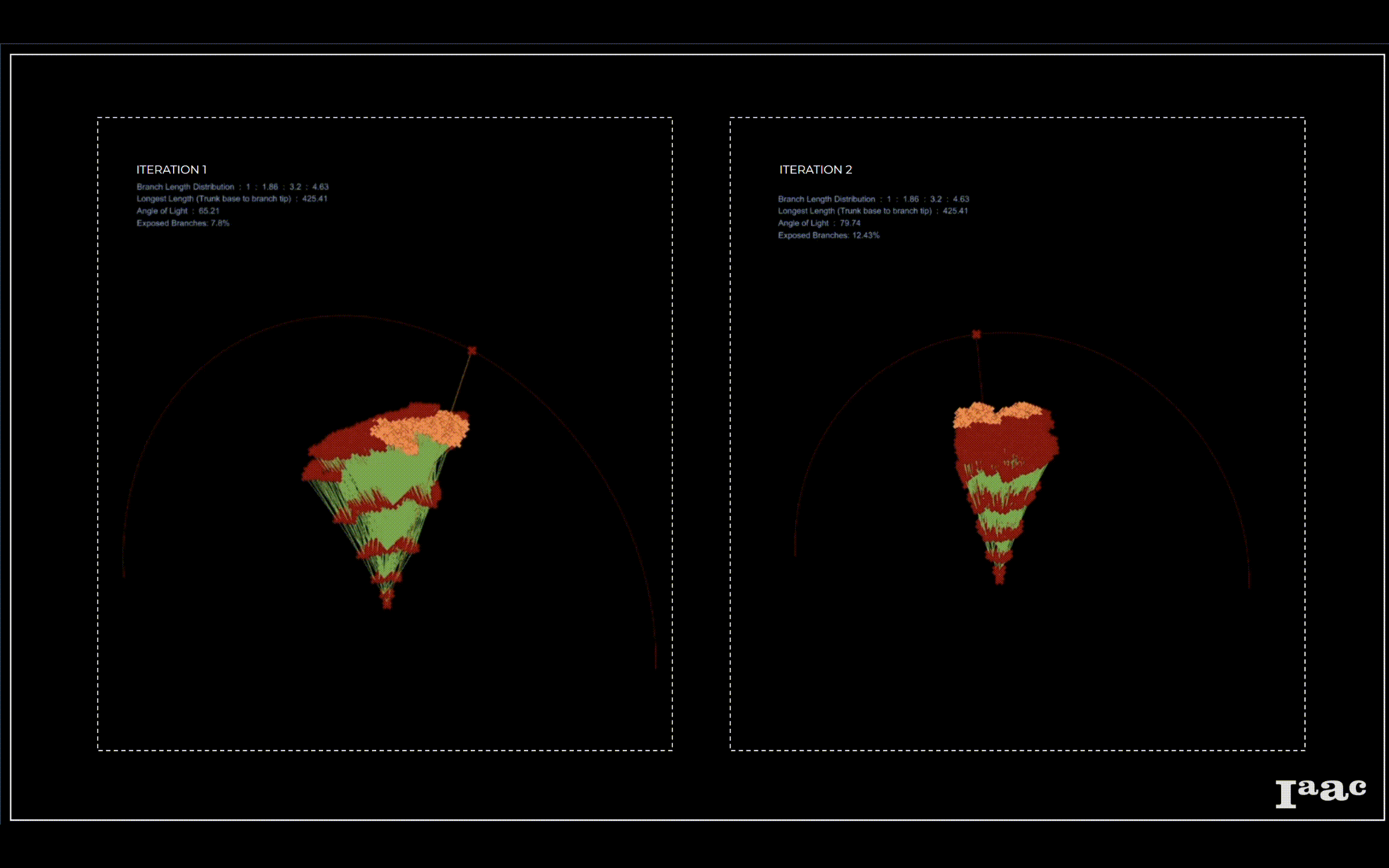
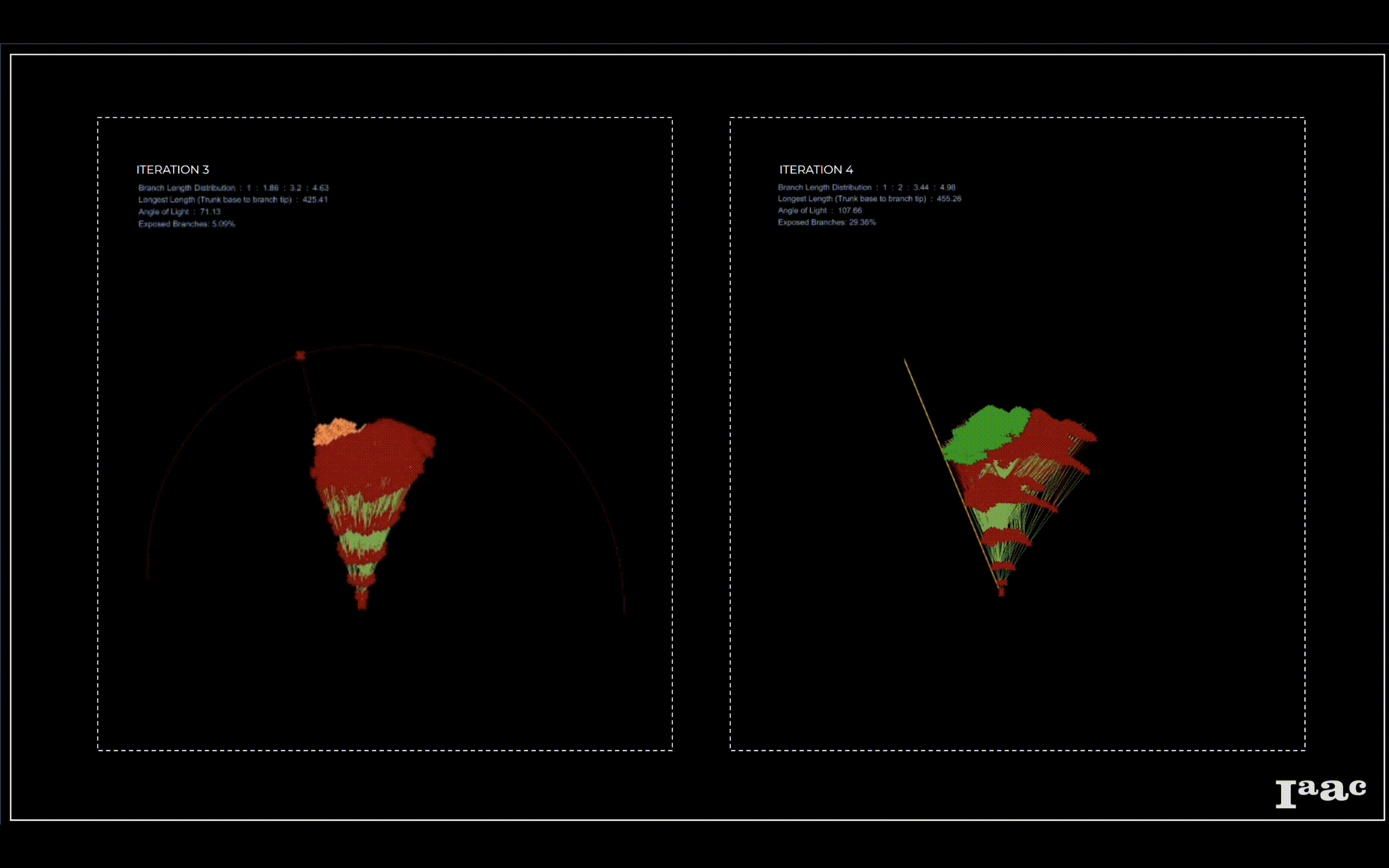
CONCLUSION
This research journey began with the exploration of Lindenmayer systems (L-systems) within the Grasshopper environment, using the Rabbit plugin to simulate fractal growth. Initially focused on modeling complex branching structures inspired by nature, such as trees and plants the investigation led to the dynamic generation of fractal geometries through iterative symbol replacement rules. However, as the research progressed and the Rabbit plugin become more constraining in terms of numerical data, attention shifted towards understanding how environmental factors, particularly sunlight, influence branching patterns, resulting in a departure from traditional L-systems towards a more stochastic and adaptive growth approach. While this deviation may initially seem off-course, it has opened up new avenues for exploration and innovation. By incorporating randomness and environmental interactions into the growth process, we have gained insights into the adaptive nature of natural systems and their response to changing conditions.
FUTURE DIRECTIONS
Building upon the insights gained from this research, future iterations could focus on further refining the stochastic growth model to better capture the complexities of natural systems. This could involve integrating additional environmental variables, such as wind direction, humidity, and soil composition, to create more realistic simulations of plant growth and ecosystem dynamics.

